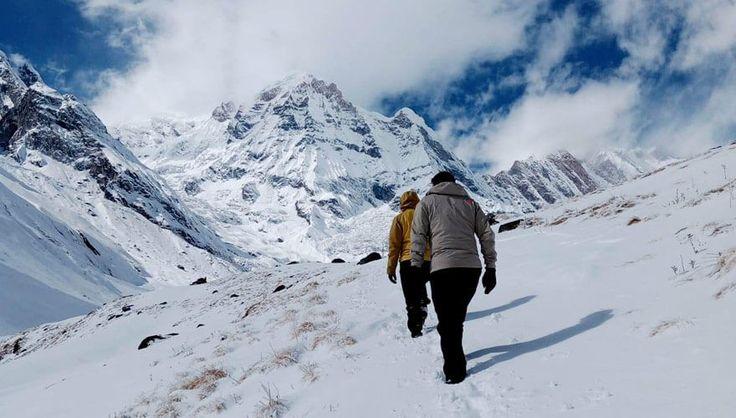
The Annapurna Headquarters adventure is a stunning excursion through the focal point of the Himalayas, giving stunning perspectives and a particular social experience. One of the essential bits of sorting out this journey is picking when to go.The climate and trail conditions can move all things considered dependably, impacting your generally speaking understanding. This guide will assist you with understanding the various seasons and how to pick the best time for your Annapurna Headquarters insight.
Understanding the Seasons
Nepal experiences four specific seasons: spring, summer/rainstorm, collect time, and winter. Each season has its own game plan of advantages and troubles for venturing out to Annapurna Base Camp Trek.
Spring (March to May)
Spring is one of the most prominent times for the Annapurna Base camp venture. The cooler environment is charming.
Advantages:
- Pleasant Weather: During dawn temperatures is low at lower levels and with cooler temperatures at lengthy hights.
- Blooming Rhododendrons: The ways are enhanced with wonderful rhododendron sprouts, working on the normal greatness of the region.
- Clear Views: The skies are by and large clear, giving astonishing viewpoints on the Annapurna and Dhaulagiri ranges.
Challenges:
- Crowds: Because of the good circumstances, the paths can be packed with travelers from around the world.
- Accommodation: With the deluge of travelers, getting convenience in teahouses might require advance booking.
Summer/Monsoon (June to August)
The late spring months bring the storm season to Nepal, portrayed by weighty precipitation and high mugginess.This period is less well known for traveling, however it has its own interesting appeal.
Advantages:
- Lush Greenery: The downpour rejuvenates the scene, with lavish green woods and dynamic vegetation.
- Fewer Crowds: The paths are a lot calmer, offering a more single and serene journeying experience.
- Lower Prices: Convenience and licenses might be less expensive during the slow time of year.
Challenges:
- Rain and Mud: Regular downpour can make the paths elusive and sloppy, expanding the trouble of the journey.
- Limited Views: Overcast cover and fog can cloud the mountain sees.
- Leeches: The wet circumstances draw in leeches, which can be a disturbance.
Autumn (September to November)
Fall is another zenith season for the Annapurna Central command journey.The weather patterns is consistent, and the detectable quality is inconceivable, making it one of the most marvelous times for venturing.
Advantages:
- Clear Skies: Post-storm, the skies are clear, offering widely inclusive viewpoints on the mountains.
- Comfortable Temperatures: Daytime temperatures are lovely, going from 10°C to 20°C (50°F to 68°F), with cooler evenings.
- Festivals: Fall concurs with significant Nepali celebrations like Dashain and Tihar, giving a novel social encounter.
Challenges:
- High Traffic: The great circumstances draw in numerous travelers, prompting swarmed trails and teahouses.
- Booking Necessity: Because of the ubiquity, booking convenience and licenses in advance is fitting.
Winter (December to February)
Winter traveling to Annapurna Headquarters is conceivable yet accompanies critical difficulties because of cold temperatures and snowfall.
Advantages:
- Solitude: The paths are less packed, giving a more quiet traveling experience.
- Crisp Views: The chilly climate brings clear skies, offering staggering, fresh perspectives on the snow-covered tops.
- Adventure: Winter traveling adds a component of experience and challenge.
Challenges:
- Cold Temperatures :Daytime temperatures at higher heights can dip under freezing, with incredibly chilly evenings.
- Snow and Ice: Snowfall can make the paths challenging to explore, and a few sections might be blocked.
- Limited Services: Numerous teahouses might close for the season, requiring cautious preparation and arrangement.
Choosing the Best Time for Your Trek
Picking the best time for your Annapurna Headquarters journey relies upon your inclinations, wellness level, and capacity to bear different weather patterns.Here are a few hints to assist you with choosing:
1. Consider Your Weather Preferences
- Assuming that you incline toward moderate temperatures and blossoming vegetation, spring is a brilliant decision.
- For clear skies and social encounters, choose a pre-winter journey.
- On the off chance that you appreciate isolation and are ready for downpour, summer/storm offers an exceptional viewpoint.
- For a peaceful, testing experience with fresh perspectives, consider winter journeying.
2. Assess Your Physical Fitness
- Spring and pre-winter are reasonable for most travelers because of positive climate and moderate path conditions.
- Summer/rainstorm requires capacity to bear wet and dangerous circumstances.
- Winter journeying requests great actual wellness and involvement in chilly climate traveling.
3. Plan Your Gear and Preparation
- Spring and harvest time require standard traveling gear, including layered attire and great climbing boots.
- Summer/rainstorm requires waterproof stuff and against siphon insurance.
- Winter journeying requests top notch warm stuff, a decent hiking bed, and potentially crampons for cold segments.
Conclusion
The Annapurna Base Camp trek is a journey of a lifetime, offering stunning natural beauty and cultural richness. Picking the best time for your journey relies upon your own inclinations, wellness level, and readiness for changing weather patterns.Whether you pick the dynamic sprouts of spring, the reasonable skies of harvest time, the rich vegetation of the rainstorm, or the isolation of winter, each season offers a remarkable and extraordinary experience.With legitimate preparation and planning, you can overcome the Annapurna Headquarters journey and make recollections that will endure forever. Blissful journeying!







